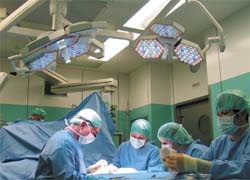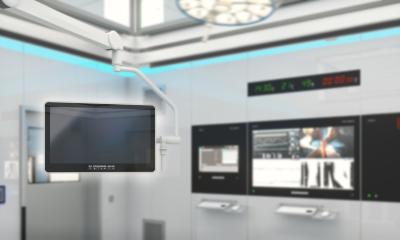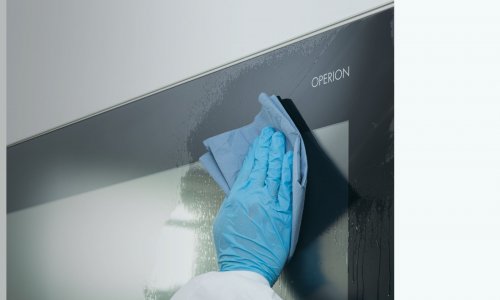Studies confirm adjustable colour temperatures benefit surgeons
After their debut at the 2005 Medica trade show, the first LED lamp made by Trumpf Medizin Systeme (iLED) found new users worldwide.

In the USA, the light also received two prizes at the Healthcare Facilities Symposium & Expo, which recognises extraordinary innovations in the health industry. However, it was even more important for their inventors to scientifically prove the quality of the iLED.
Trumpf decided to commission two studies, to ascertain the degree that adjustable colour temperature influences our visual performance and also whether its iLED sufficiently meets hygiene standards for the operating theatre (OT).
Colours for more vision
Currently, the iLED is the only operating light that can have its colour temperature adjusted to any OT situation – from warm red 3,500 Kelvin to cool blue at 5,000 Kelvin. An independent lighting institute conducted a study in which 30 test subjects had to identify standardised vision test characters on a colour background under both the iLED 5 and gas-discharge lamps. Results: Under the iLED, the characters were considerably clearer with weak colour contrasts. In most cases, the test subjects had the best vision at 4,000 to 4,500 Kelvin and, with a blue background, at 3,500 Kelvin. In addition, they preferred the iLED, even when the colour temperatures of both lamps were the same (4,000 Kelvin) – because the iLED’s light was more evenly distributed. For surgeons, this means that the iLED helps them to better distinguish between healthy tissue and diseased tissue that is slightly off colour. For a red wound location the surgeon’s eyes are relieved by a high colour temperature, for a blue wound location, a low colour temperature.
Best ratings for hygiene
Professor Seipp, at Germany’s Centre for Hygiene and Technical Public Health, tested how well the iLED met the hygiene regulations in the OT under real-life conditions and in strict compliance with EU directives. His findings: The iLED 3 is one of the best lamps that is compatible with an air-handling ceiling that he has ever tested - because it generates very little turbulence that would disturb the irrotational, laminar flows in the OT and thereby impair the room’s cleanliness. This means that the light is also well suited for sensitive medical disciplines, such as orthopaedics and bone surgery, in which absolute sterility is top priority. The iLED’s excellent ratings come from an open, compact form, low laminar flow surface and minimal temperatures on the lamp body.
01.05.2007











